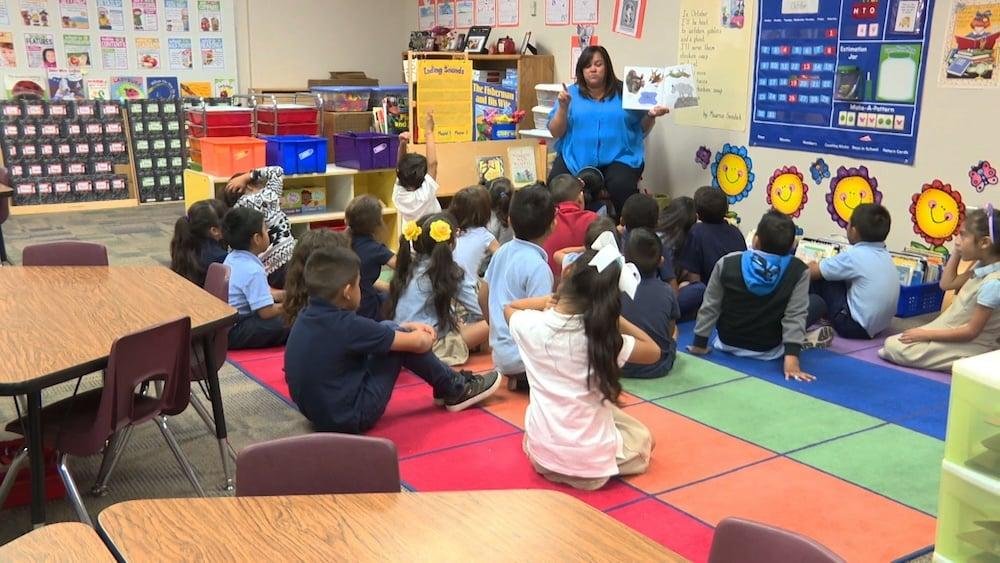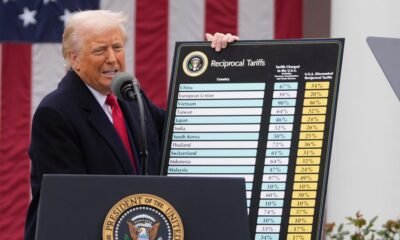Education
Education Showdown: Harris vs. Trump — Who’s Leading the Charge?

As the race for the presidency intensifies, education policy has emerged as a crucial yet often overlooked topic in the campaigns of former President Donald Trump and Vice President Kamala Harris. While issues like immigration and the economy dominate discussions, both candidates present starkly contrasting visions for American education.
Trump’s education platform emphasizes parental rights, universal school choice, and a commitment to “patriotic education.” According to Karoline Leavitt, Trump’s national press secretary, enhancing access to school choice and elevating parental involvement will be central to his plan. “President Trump will improve academic excellence for all students,” Leavitt stated, indicating a focus on fundamental subjects over what she describes as divisive social themes pushed by the current administration.
Conversely, Harris’ campaign focuses on the educational investments made during the Biden-Harris administration, highlighting the historic funding allocated for K-12 education. Campaign spokesperson Mia Ehrenberg noted Harris’s leading role in passing this funding, criticizing Trump’s “extreme” approach that she argues would dismantle vital resources for public education. “Republicans want to cut billions from local K-12 schools,” Ehrenberg asserted.
Adding to the debate, Harris has challenged the Heritage Foundation’s Project 2025, a conservative initiative proposing significant alterations to education policy, such as eliminating Head Start programs and restricting student loan forgiveness options. While Trump has distanced himself from some aspects of this blueprint, he continues to advocate for significant changes, including the closure of the U.S. Department of Education and a shift of educational control back to individual states.
At a recent Democratic National Convention, Harris firmly opposed any move to eliminate the Department of Education, emphasizing its crucial role in funding public schools. In stark contrast to Harris’ stance, Trump proposes the creation of a new credentialing body for teachers focused on “patriotic values,” while also pushing for merit-based pay and greater parental input in school leadership.
The Democratic platform emphasizes the recruitment of additional teachers and support staff while advocating living wages for school personnel and improved working conditions. In contrast, Trump’s proposals include a “Parental Bill of Rights” aimed at enhancing curriculum transparency and school choice. His opposition to concepts like critical race theory illustrates a broader push to limit federal influence on educational content.
In a separate but related matter, the Biden-Harris administration’s revised Title IX regulations, aimed at protecting LGBTQ+ students, face legal challenges from several GOP-led states. These changes aim to reverse Trump-era policies but, if re-elected, Trump’s administration pledges to revoke these updated protections upon taking office.
The discussion further extends into higher education, where Harris highlights her administration’s achievements in student loan forgiveness, while criticizing Trump’s previous attempts to dismantle programs like the Public Service Loan Forgiveness. Despite the pause on the administration’s SAVE plan due to a Supreme Court ruling, Harris remains focused on making education more affordable, including plans to cut degree requirements for federal positions.
Trump, advocating for a free online university named the “American Academy,” proposes funding it through taxes and fines on large private university endowments. His view on student loan reform remains steadfast; he contends the Biden-Harris administration’s strategies have been ineffective and illegal.
As the campaigns push forward, education policy is set to become a defining issue, influencing voter decisions ahead of the November elections.


















